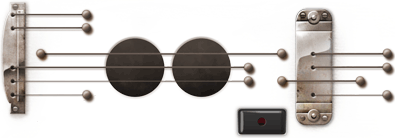I've been very impressed over the last few weeks with how the students are growing musically! They are all getting better each class at finding the beat, whether I change it fast or slow!
After we sing Hello we have had fun making shapes with our voices. See your child can teach you how to do this at home. Follow the shape up high, down low, or straight across (on the same pitch) with your voice. I had many volunteers do this in class today and they did a fantastic job!
We have been working on listening and watching for musical cues (when to start and stop). We have played sticks along with the song Kookaburra and jumped like frogs with the song Gallump Went the Little Green Frog. Ask your child what word they are suppose to jump on with the frog song and enjoy jumping like frogs together at home!
We are also learning about simple musical form with the song William Tells Ride. We leaned that there are three different parts and they get the letters A, B, and C. The form is A, B, C, A. The class split up into three groups and each group had to listen and watch for their part of the song so they played instruments at the correct time.
We enjoyed the Finale from William Tell by Gioachino Rossini as a play along song. Click the link below to listen and play along at home!
Today in class we sang songs about Fall leaves and ended with the book "The Leaves on the Trees" by: Thom Wiley. This book is to the tune of The Wheels on the Bus, but tells you about what color and shape Fall leaves you will see from different types of trees. A great book to check out. If you sing it at home you could hunt for those types of leaves outside, put them under a plain piece of paper at home and color over it so the leaf shape will show up. Create your own Fall trees and sing while you work on it!
http://www.amazon.com/Leaves-Trees-Thom-Wiley/dp/0545312906/ref=sr_1_1?ie=UTF8&qid=1318272394&sr=8-1
There's a little wheel a-turning in my heart,
There's a little wheel a-turning in my heart.
In my heart, in my heart,
There's a little wheel a-turning in my heart.

